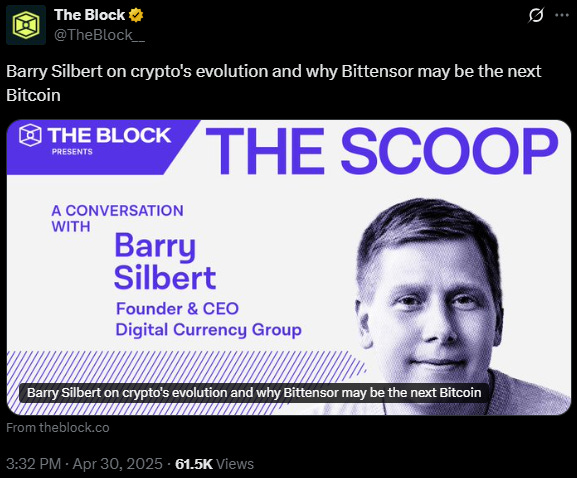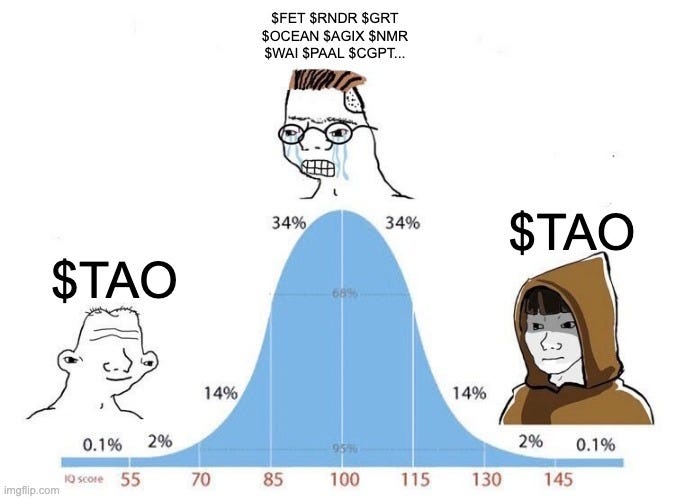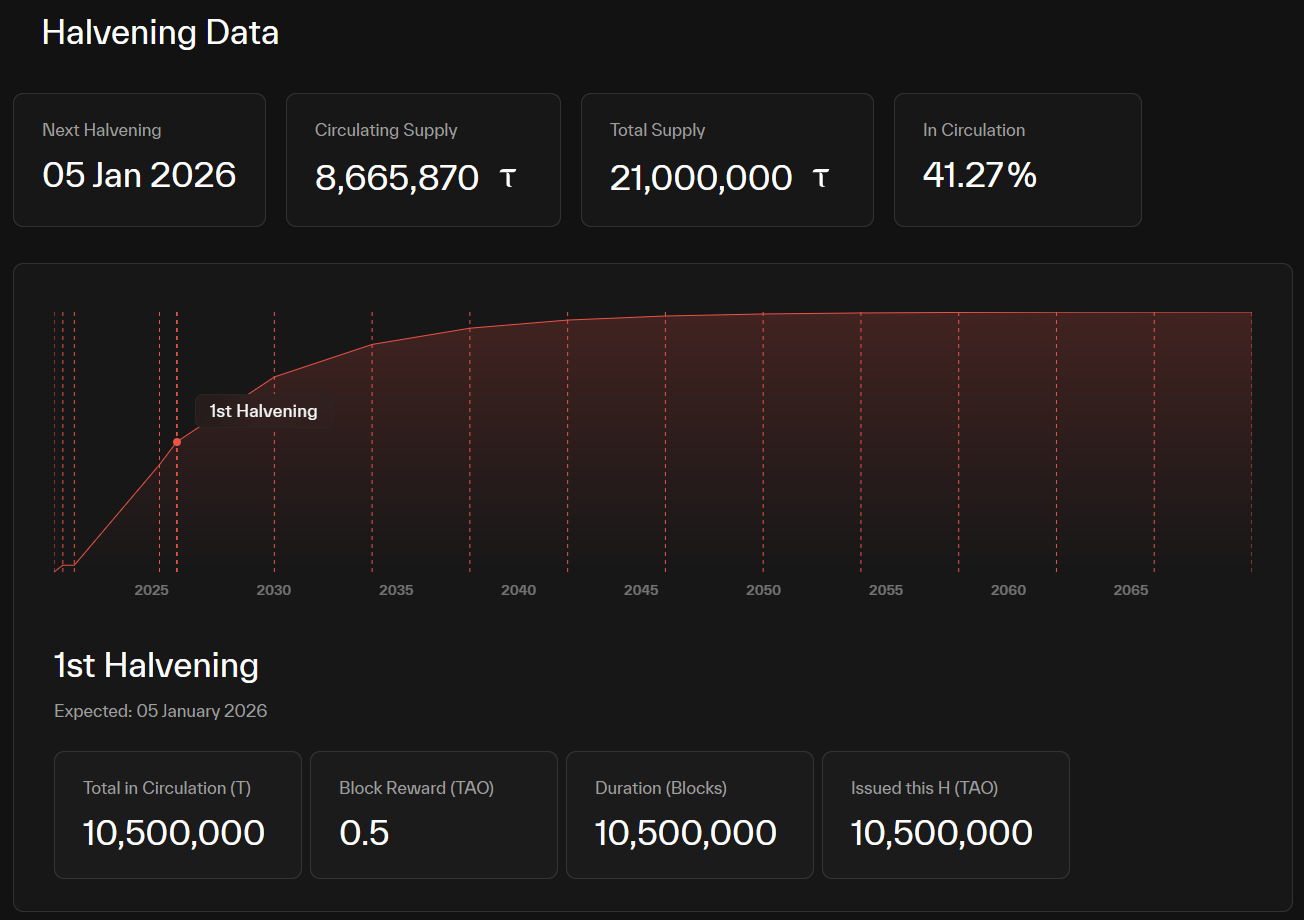⚡️Bittensor dTAO Overview: Decentralized AI and the TAO Opportunity
Is it finally time for Crypto x AI?
AI companies like ChatGPT or Claude are worth hundreds of billions of dollars.
Consensus is clear that AI has a very bright and valuable future. And there are already signs that it will integrate itself into every fabric of our lives (for better or worse).
But AI is increasingly centralized in the hands of a few companies and investing in the rise of AI is inaccessible to most people. This sort of issue where decentralized coordination and value alignment is needed could be th exact scenario where crypto is built to shine.
What if there were a network of projects working on AI model development, generative AI, agents and AI-powered tools that are incentivized to be the best models possible, while being controlled decentrally?
What’s the potential of something like that?
The more I’ve built on Bittensor, the stronger my belief that TAO will be one of the most significant assets of our generation. It’s tackling some of humanity’s biggest challenges head-on.
For months, there has been a bull market raging within the Bittensor (TAO) ecosystem. The release of dTAO in February has been a game changer so far: many individual projects built on Bittensor (called subnets) 5-10x’ed their market value in two months.
With complex AI terminology & technical concepts, it's easy for investors to look elsewhere. But the potential in the Bittensor ecosystem is tremendous.
This will be a multi-part research series. This first piece is coverage on the dTAO release and how it revolutionizes the ecosystem, designed for even those unfamiliar with the Bitensor ecosystem. We’ll also include several top subnets: what they do, why they might be able to reach escape velocity.
To truly capitalize on Bittensor subnet growth, first you need to understand what dTAO is and how it works. We’ve laid out everything you need to know below, so you’ll be confident in starting.
The second piece will be a deeper dive into smaller, lesser-known subnets that have strong potential. Coming very soon. Follow the Dynamo DeFi X account to be the first to know when that research goes live.
How Bittensor and dTAO Work for Dummies
Briefly: Bittensor Origins and Mission
Bittensor was launched in 2021 by the Opentensor Foundation born from the idea that AI shouldn't just be controlled by big tech companies. It should be open, decentralized, and accessible to everyone, much like how Bitcoin made money decentralized.
Bittensor's goal is to create a global, open-source marketplace for AI where anyone can contribute computing power, AI models, or data and get rewarded for it.
Essentially, it's building a "worldwide brain" where people work together to make AI smarter, and everyone gets paid for their part.
We’ve covered Bittensor before - we discussed the basics: Yuma Consensus, TAO tokenomics, basically: WTF is Bittensor. Worth reading if you haven’t already.
The Big Picture: A Marketplace for AI
Bittensor is a network where people work together to create and improve AI tools. Instead of one company owning everything, Bittensor splits the work into smaller, dedicated game rooms called subnets. Each subnet focuses on a specific task, like making a chatbot or predicting stock prices.
The network uses a cryptocurrency called TAO to reward people for their contributions. The better your work, the more TAO you earn. This setup creates a simple but powerful incentive system that drives the entire network.
The Arcade
Imagine Bittensor as a giant online arcade where people play games to make the best AI models, and they earn tokens for doing a good job.
The arcade is built on a blockchain, which is like the arcade's main computer that keeps track of scores, rewards, and rules.
The Players in the Arcade
Miners: The Gamers
Miners are like the players in the arcade trying to win tickets. They use their computers to create or run AI models, competing by providing the best AI outputs to score high and win more TAO.
Validators: The Judges
Validators check how well the miners are playing. They send challenges to miners and score their responses based on quality. These scores determine how TAO rewards are distributed.
Yuma Consensus: The Scorekeeper
Yuma Consensus is the system that takes all the validators' scores and decides how to split the TAO rewards. It's like the arcade's main computer that ensures the game is fair.
Subnets: The Game Rooms
Subnets are like different game rooms in the arcade, each with its own rules and tasks. One subnet might be for building chatbots, another for predicting weather, and another for generative AI.
Each subnet is created by a subnet owner who sets the rules. Miners and validators join the subnets they think will earn them the most TAO.
At the time of writing, there are nearly 100 subnets. More subnets join every week. There’s a registration fee for new subnets, so there’s some skin in the game and new subnets are motivated to create real products.
What is Dynamic TAO (dTAO)? The Arcade Evolution
The Old System
Before dTAO, validators in the Root Network (it’s now the Root Subnet, #0) acted like arcade managers who manually decided how many tickets each game room deserved based on how useful they thought the room was.
This was slow and sometimes unfair, like managers favoring their favorite games.
The dTAO Solution
dTAO, introduced in February 2025, changed this by letting the market decide (market incentives, baby!). Now with dTAO, the arcade now looks at how many players are spending their money on each game's special coins (alpha tokens).
In other words, the value of each subnet's alpha token determines how many TAO tokens the subnet gets.
If tons of players buy coins for the racing game because it's super fun, that game gets more tickets to share with its players (miners and validators). This makes the arcade fairer and faster at rewarding the best games.
How dTAO Works
Each Subnet Has an Alpha Token:
Every subnet has its own token traded on markets
Token price reflects popularity and utility
Market Value Sets the Rewards:
Valuable subnets receive higher TAO emissions
Creates a direct link between market demand and rewards
Community Power:
Anyone who owns TAO or alpha tokens can influence the network
Creates a truly decentralized system driven by market incentives
This entire system is based on a fundamental principle: incentives.
Standard Emission Protocol for Bittensor Subnets
When you buy a subnet’s token, you’re essentially staking TAO to that subnet through a validator. This puts you on the validator’s team, and earns you a portion of the validator’s rewards.
Each subnet in the Bittensor network follows a standardized emission distribution protocol that determines how rewards are allocated among participants. Here's how it works:
Alpha Token Distribution
At the end of each tempo (360 blocks, approximately 72 minutes), the accumulated alpha tokens are distributed among network participants in specific proportions:
Miners: 41%
Distribution among miners is determined by their performance scores as evaluated by validators via the Yuma Consensus algorithm
Validators: 41%
Validators receive an equal share to miners
Validators then share these rewards with anyone who has staked to them
Subnet Owner: 18%
The creator of the subnet receives this portion as an incentive for developing and maintaining the subnet
Staking Rewards
When TAO holders stake to subnets through validators, they become part of this emission system. The validator combines all delegated stakes with their own to increase their network influence. After taking their fee (up to 18%), validators distribute the remaining rewards proportionally to those who staked with them.
This standardized protocol ensures that all participants are incentivized to contribute their best work to the network, with rewards proportional to the value they create.
TAO Halving: Network-Wide Impact with Subnet-Specific Timelines
While Bittensor follows a Bitcoin-inspired model with a network-wide halving that reduces emissions across the entire ecosystem, the arcade doesn't reset all game rooms simultaneously. Instead, each subnet has its own token emission schedule.
When a new subnet joins the Bittensor arcade, it begins with a fresh emission rate for its alpha token, separate from the main network's timeline. This alpha token follows the same halving pattern as TAO, but its clock starts ticking from the moment the subnet is created.
The main TAO halving affects everyone in the arcade - when it occurs, the daily distribution drops from 7,200 to 3,600 TAO, meaning all miners, validators, and subnet owners receive fewer rewards for the same work. However, newer subnets might still be in their early, more generous emission phase for their subnet-specific alpha tokens.
This dual system creates an interesting dynamic where older, established subnets might see both their TAO and alpha emissions reduced, while newer subnets still enjoy higher alpha token emissions despite the network-wide TAO reduction. Smart players in the Bittensor arcade understand these timing differences and position themselves accordingly.
The Market’s Favorite Subnets
Chutes (Subnet 64)
What It Does:









